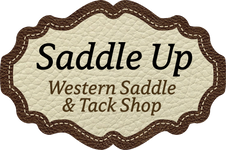Let's Get Down to Bit'ness - Western Bit Styles
Posted by Lynnsy Johnson - Saddle Up on Mar 12th 2020
In the western world, there are endless choices when it comes to selecting a bit. It can be very overwhelming to pick the right one for your horse. There are so many different brands, types, materials, sizes, and mouthpieces. You also have to consider how old your horse is, what level of training they are at, what discipline you are participating in, and your riding style. Doing your research and listening to your horse is very important when on the bit hunt. Today we will discuss the basic styles of western bits and what makes them unique.
Correction Bit
Correction bits are training bits used by advanced riders and finished horses. There is a misconception with the name of this bit. Just because it is called a "correction bit" does not mean it corrects training issues. It is intended for experienced horses and experienced riders. The mouthpiece applies pressure to the horse's tongue at the flexible joints of the port and the bars of the horse's mouth. Correction mouthpieces are used on shank bits, gag bits or combination bits.There are multiple styles to choose from that includes copper, sweet iron, or stainless steel. Correction bit shank styles can be plain, have an antique brown finish, or silver overlay trim for a show bit. Use correction bits with care. They are often used in reining shows and other competitions that require a finished horse and soft handed rider.
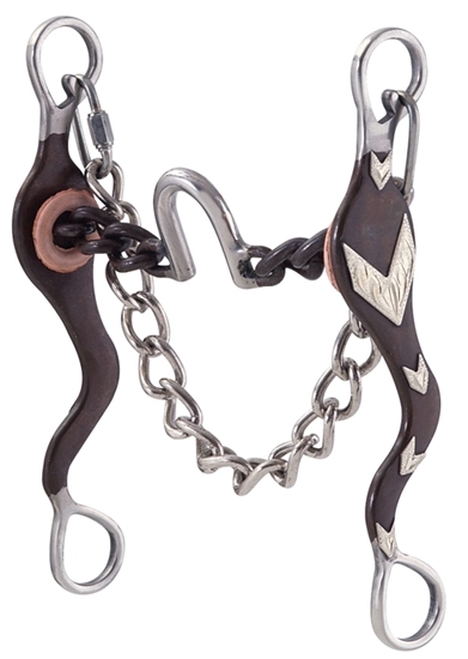
Dee Ring Bit
A Dee Ring Bit is a compromise between a full cheek snaffle and an eggbutt. It has a vertical shank that extends above and below the mouthpiece. They are joined on the top and bottom by a D-shaped ring on swivel joints. It helps prevent pinching at the corners of the mouth. It has less bulk than an eggbutt and it provides lateral control through the vertical shanks.
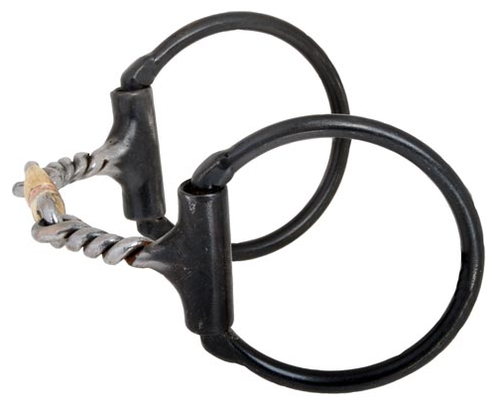
Eggbutt
The eggbutt is a common multi-discipline style of cheek piece for snaffle bits. It minimizes rings that pinch the edges of the horse’s mouth and provides lateral stabilization. By flaring out the ends of the mouthpiece and joining the rings with swivel joints where the lips make contact at the edge of the bit, the eggbutt can be a more comfortable for many horses. The edges of the mouthpiece are less likely to pinch the horse’s lips and because the cheek is fixed in relation to the mouthpiece, the bit offers moderate lateral control.
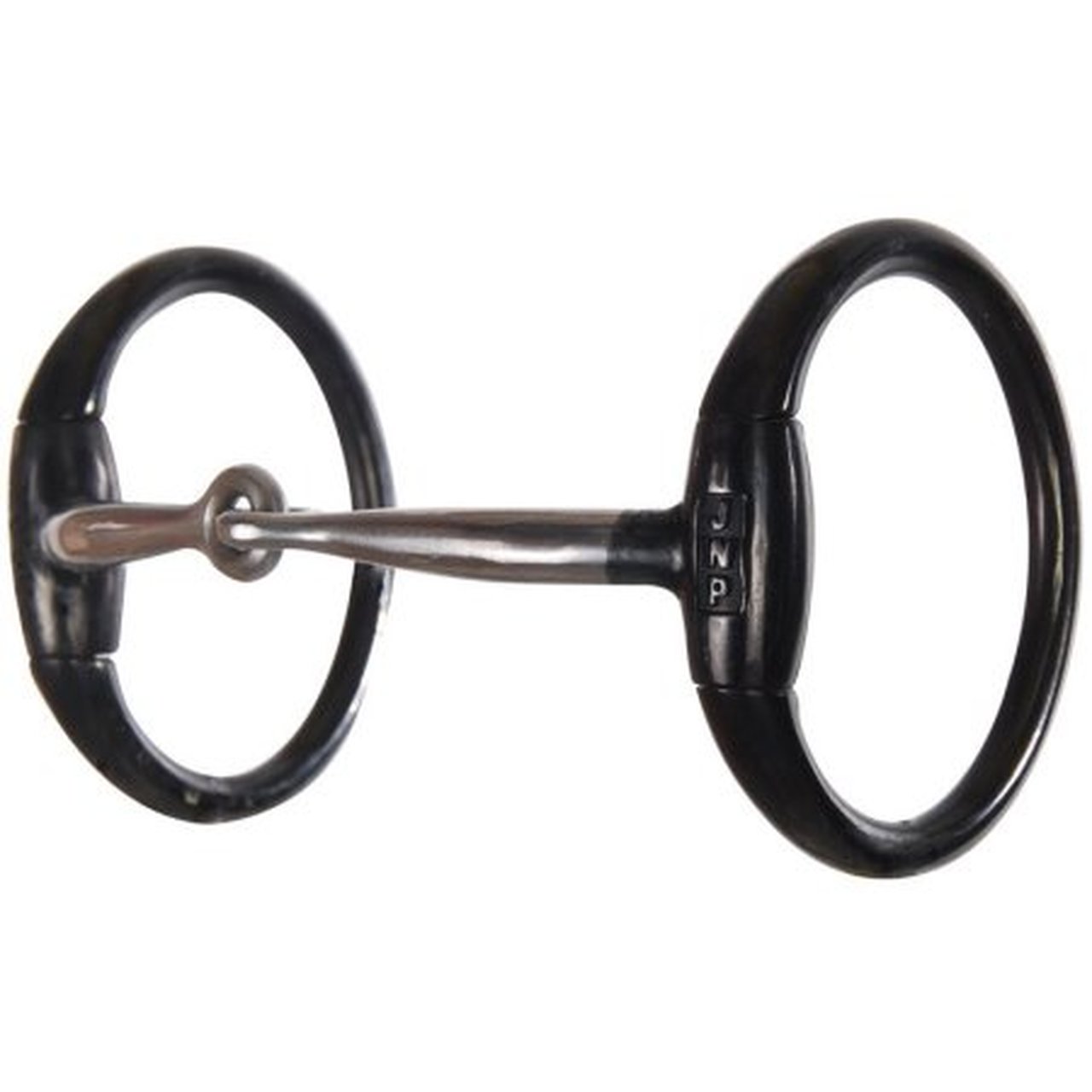
Loose Ring Bit
Loose ring bits have a circular ring which rotates around on the mouthpiece. It allows the bit to be very mobile, more so than any other ring. It promotes relaxing in the horse because of the free movement. The loose ring will also rotate before the bit mouthpiece adds pressure to the mouth. This allows more signal than a fixed bit. This is a common choice for young horses who are in training because of the mild action and loose movement of the ring.
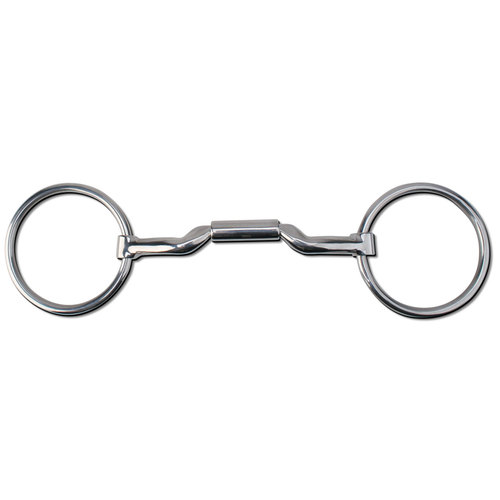
Long Shank
A long shank increases the leverage and the pressure on the curb groove and the bars of the mouth. Longer shanked bits rotate back further before applying pressure on the horse's mouth than shorter-shanked bits. Having a long shank on your bit insures more leverage and your message is quicker. Typically, riders introduce a long shank once they have a finished/experienced horse as it can be a bit more pressure in the mouth.
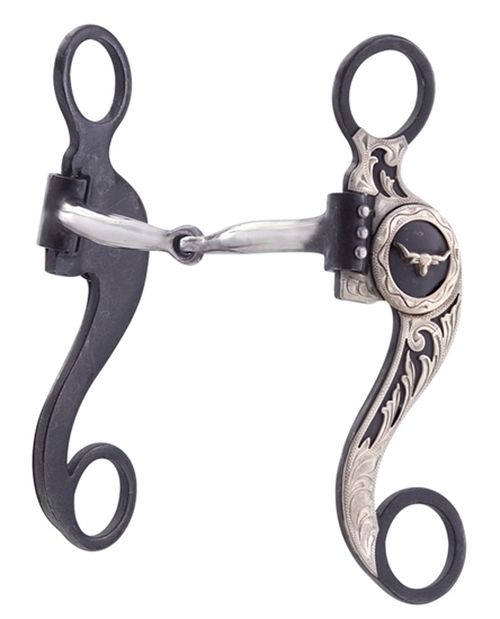
Short Shank
A Short Shanked Bit is very common in multiple disciplines. It can be included with multiple mouthpieces. It is usually a milder bit, but also responds quickly when the rider touches the reins. Short shanked bits are usually better for a young horse transitioning from a snaffle to a curb because if the inexperienced horse gets into a place where bit pressure from the rider's hands becomes significant, there is less leverage pressure placed on the horse's head.
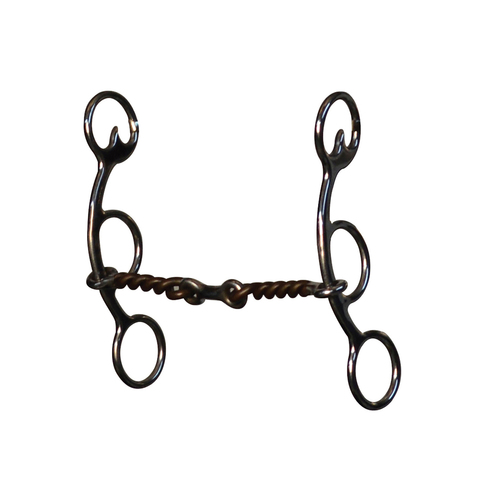
Snaffle
A snaffle bit is the most common type of bit used in the horse community. It consists of a mouthpiece with a ring on either side and acts with direct pressure. A snaffle is not necessarily a bit with a jointed mouthpiece, as is often thought. A bit is a snaffle because it creates direct pressure without leverage on the mouth.The snaffle bit works on several parts of the horse's mouth including the tongue and bars, the lips of the horse also feel pressure. The rings also serve to act on the side of the mouth and the sides of the jawbone.
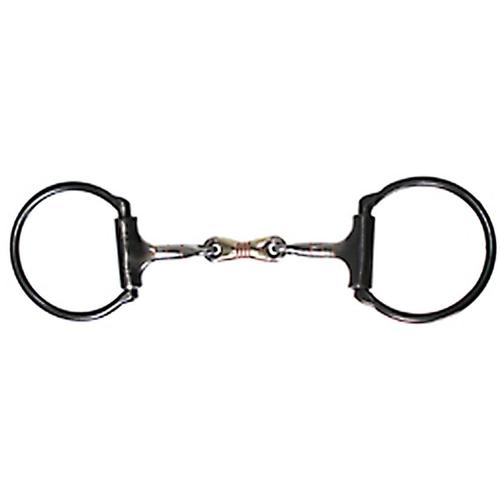
This is just a small glimpse at all the different options for western bits. It cane be difficult to narrow it down to one bit and you may have to try multiple ones to find the perfect match. At Saddle Up, we offer a bit trial program that allows you to try a bit, before you buy. It is a super helpful tool when bit shopping. Give us a call or stop by the shop for more information. If you have further questions on bits, please don't hesitate to give us a shout or check out these cool videos on our YouTube channel that goes in deeper on western bits. Thanks for the read and we will catch ya next time!
https://www.youtube.com/watch?v=xhAEuOeYRNo&t=2s
https://www.youtube.com/watch?v=pCnF6Z7zsaU&t=65s
https://www.youtube.com/watch?v=aCu58ZKfGNs
(all pictures were used from Saddle Up's website www.saddleupcolorado.net)
